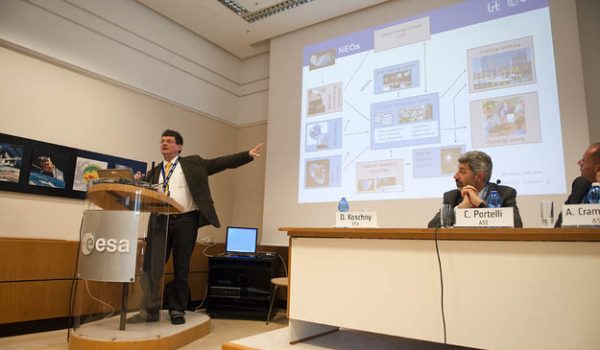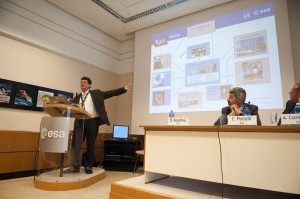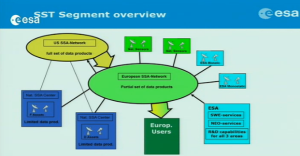
European Space Agency (ESA) has inaugurated the Near-Earth Object Coordination Centre (NEO-CC) at the European Space Research Institute in Frascati, near Rome, on May 22. It is the second center opened by ESA in 2013 under the Situational Awareness (SSA) Program, after the Space Weather Coordination Centre in Brussels.
“This is another major milestone just few weeks after the inauguration of the space weather center” said Thomas Reiter, ESA Director of Human Spaceflight and Operations.
NEO-CC will serve as a central access point to the European network of NEO data sources, acting also as an information disseminator. The center will support NEO experts in organizing both new and existing European assets, systems and sensors into a network system. One of the NEO-CC’s aims is also to improve warning services and provide near-realtime data, not only to European users but also to international customers, whilst developing NEO deflections and mitigation methods at the same time.
NEO-CC federates different assets on its website, including University of Pisa’s NEODyS orbit propagation system which computes precise asteroid orbits. Moreover, it also contains a physical properties database, previously maintained by the German space agency and a list of asteroid needed for follow-up observations provided by the Italian Institute of Astrophysics. All the data produced under the SSA-NEO system, from raw sky images to already processed data will be stored by the center. NEO-CC has been developed by Telespazio and it will be maintained for operations and for evolution of web services by Elecnor Deimos. Claudio Portelli, Technology Director for the Italian space agency, has proposed to dedicate the center to Giuseppe Piazzi, the Italian astronomer who discovered Ceres, the largest asteroid of the solar system, in 1801.
Currently, there are over 600,000 asteroids known in our Solar System, and almost 10,000 of them are NEOs and their size can range from meters to kilometers. One of the main goals of the program is to develop the first prototype of a very wide field-of-view telescope, within the next 3 years. The NEO Survey Telescope would provide a continuous observation of the night sky to aid in the identification of potential NEOs. The project has been estimated to cost about €10 million.



















































































































![A trajectory analysis that used a computational fluid dynamics approach to determine the likely position and velocity histories of the foam (Credits: NASA Ref [1] p61).](http://www.spacesafetymagazine.com/wp-content/uploads/2014/05/fluid-dynamics-trajectory-analysis-50x50.jpg)



Leave a Reply